Tynecastle: Heart Of Midlothian
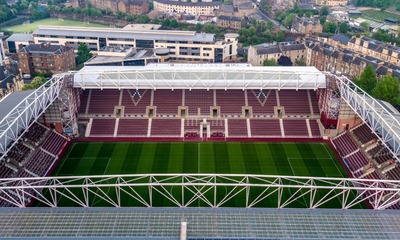
From Hearts of Midlothian FC
Heart Of Midlothian Football Club, better known simply as ‘Hearts’, was formed in 1874. For the first twelve years of the club’s existence they were nomads, playing in numerous locations around Edinburgh. They played their games at locations such as the Meadows, Powderhall and Powburn until 1886 when they started playing their matches at the site where Tynecastle Stadium currently stands.
An inauguration match took place between Hearts and the English side Bolton Wanderers in April 1886. It wan’t until more than four years later that a Scottish Football League match was played at the site, however, when Hearts were battered 5-0 by Celtic. In the early part of the 20th century numerous changes took place at the ground, allowing the capacity to increase exponentially. The record attendance was set in 1932 when Rangers arrived for a Scottish Cup tie and 53,396 people turned up to watch.
Stats
| Tynecastle Stats | |
|---|---|
| Year Opened | 1886 |
| Capacity | 19852 |
| Average Attendance | 18336 |
| Record Attendance | 53396 (Hearts v Rangers (1932)) |
| Pitch Size | 100 x 64 (6400) |
| Nickname | Tynie |
| Owner | Heart of Midlothian F.C. |
| Clubs Hosted | Heart of Midlothian F.C. |
| First Fixture | Hearts v Bolton Wanderers (10/04/1886) |
| Heart Of Midlothian Stats | |
|---|---|
| Year Founded | 1874 |
| Nickname | Hearts, The Jam Tarts, HMFC, The Maroons |
| Club Mascot | Tynie Tigers |
| Rivals | Hibs |
| Previous Stadiums | The Meadows, Powburn, Powderhall |
| Kit | Maroon & White (Home) / Blue & Maroon (Away) / Black & Blue Stripes (Third) |
| Training Ground | Heart of Midlothian FC Training Ground, Riccarton |
| Shirt Sponsor | Stellar Omada |
| Team Owner | Ann Budge |
| Record Goalscorer | John Robertson (229) |
| Record Appearances | Gary Mackay (640) |
Tynecastle Photos
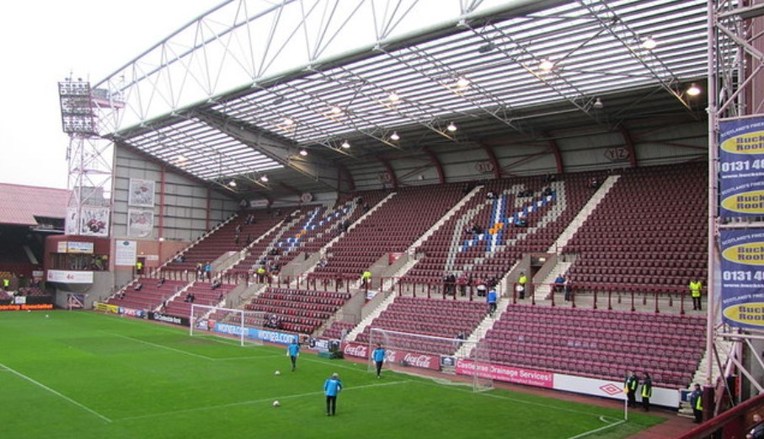
By Alonstoter (Own work) [CC BY-SA 3.0]
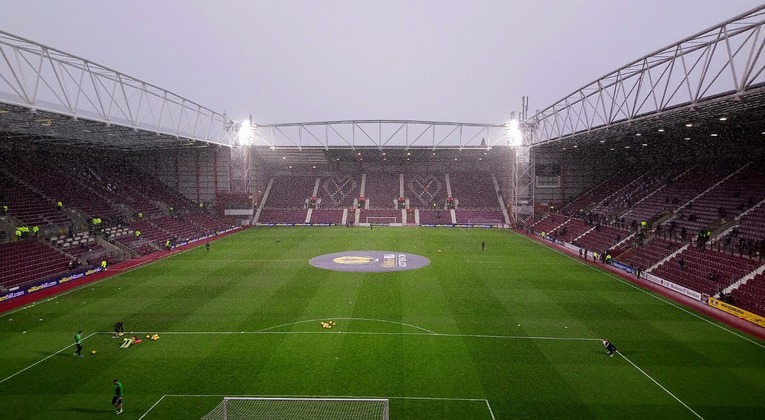
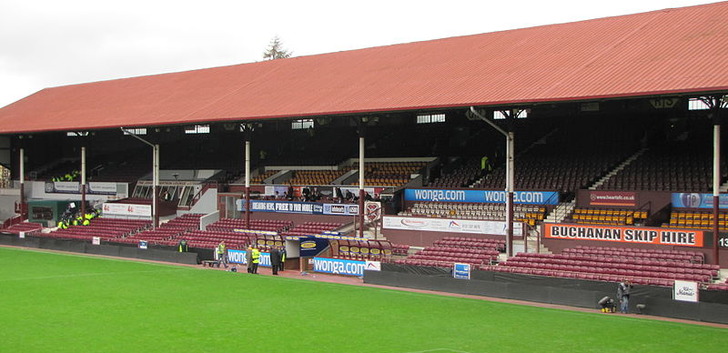
By Alonstoter (Own work) [CC BY-SA 3.0]
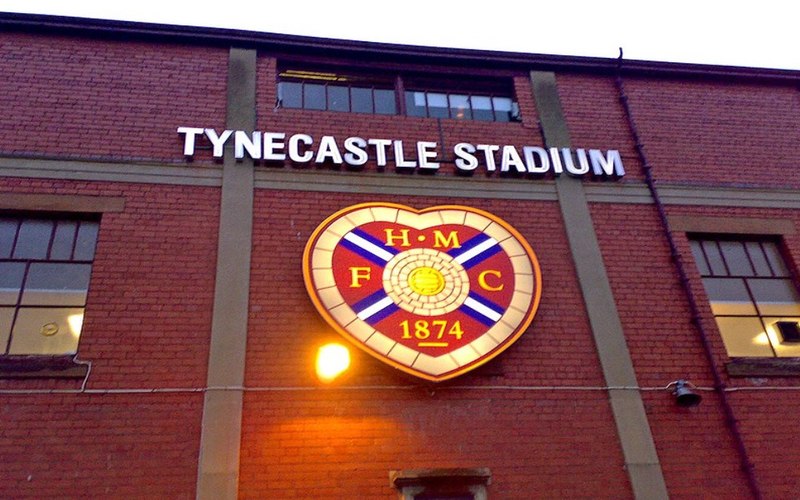
By Zhi Yong Lee from Glasgow
Tynecastle Seating Plan and Where to Sit
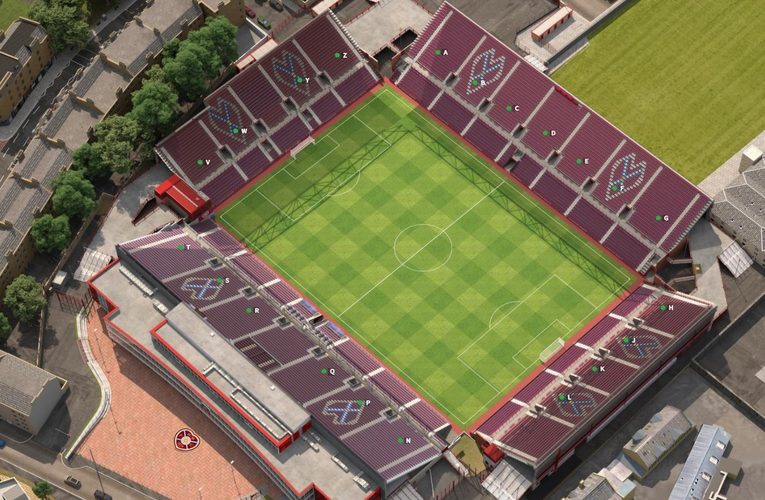
Tynecastle is built in the ‘British’ style of having four separate stands on each side of the pitch, as opposed to the more continental ‘Bowl’ style of continuous seating. Here’s a little bit of information on each side of the ground:
- The Gorgie Stand – Named after the area of the city where the ground is located, The Gorgie Stand was completed in 1997 and houses one of the club’s main hospitality ares, The Gorgie Suite.
- The Main Stand – Unsurprisingly, this is the main stand in the stadium. It houses the changing rooms, the dugouts, the Director’s Box and the players’ tunnel.
- The Wheatfield Stand – This is where the most vocal Hearts fans tend to sit. It is built at an angle just shy of 34 degrees – the maximum angle permitted for a stand in a football ground.
- The Roseburn Stand – Also known as the School End, this stand houses the away supporters and lost 280 seats from its capacity in 2005 when the pitch was lengthened in order to meet UEFA requirements.
Heart Of Midlothian Ticket Prices
The ticketing prices for Hearts match are actually quite easy to understand. The league games are split into two separate categories, with Celtic, Aberdeen and Rangers fitting into Category A and everyone else going into Category B.
After that the ground itself is split into four seating zones, namely Platinum, Gold, Silver and Bronze. How much you’ll pay for your ticket, therefore, depends on where you’d like to sit, who the opposition is and how old you are. Here are the cheapest and most expensive tickets for each category for adults and concessions:
- Category A Adults: £29 – £34 / Concessions: £20 – £29
- Category B Adults: £19 – £30 / Concessions: £15 – £22
How To Get Heart Of Midlothian Tickets
Hearts have an excellent website that you’ll want to turn to first if you’re after match tickets. If that doesn’t suit then you can call the club’s ticket office or, alternatively, drop into the Ticket Centre on McLeod Street. It’s open from 9am to 5pm Monday to Friday and from 10-2 on Saturdays. If it’s a match day then it’s open from 10am until kick off. Transaction fee’s come in at £1.50 and it’ll cost you an extra 60p if you want your tickets posting.
Where to Buy
Getting To Tynecastle
As the capital of Scotland, Edinburgh is more than a little experienced in welcoming visitors from all around the world. Here are some of the more typical methods you’ll be considering using for your journey:
Train – A train from Kings Cross Station in London to Edinburgh Waverley will take about four and a half hours without any changes. The ground is a short walk from Haymarket, which is just one stop from Waverley.
Bus – Lothian buses 1, 2, 3, 21, 25 and 33 all call near to the ground from Haymarket, as do First buses 25, 27, 28 and 427.
Car – Tynecastle Stadium is in the West of the city, so you’ll want to get onto the A71 and then follow signs for central Edinburgh.
By Air – Edinburgh Airport is nine miles from the city centre and is linked to it by an excellent tram system.
Taxi – A taxi from Waverley to Tynecastle Stadium will set you back about £10+ and should take around fifteen minutes to complete its journey.
Parking Near Tynecastle
There is no parking at the stadium itself, with Parking Enforcement Officers often patrolling nearby streets. There is some limited on-street parking near to Murrayfield Stadium, however, and you might be able to park in the Shandon area too.
Useful Resources
- Parking - Just Park
Tynecastle Hotels
Edinburgh Castle is one of the most popular tourist attractions outside of London, so there are a number of excellent hotels that are able to welcome you to the city. Here are some of our favourites:
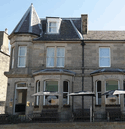
Ardmillan Hotel - £40+

Apex Haymarket Hotel - £50+
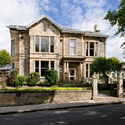
Royal Ettrick Hotel - £80+
Pubs and Bars Near Tynecastle
If stereotypes are to be believed, then Scottish people are known for liking a drink or two; whether that be a pint of Tennents lager, a dram of decent whiskey or a can of Irn Bru. Here are some of the best bars you might want to consider paying a visit to:
Murrayfield Sports Bar
Tynecastle Arms
Jessie Mays Bar & Kitchen
Facilities
Tynecastle Stadium has all of the facilities you’d expect from a well-established top-flight stadium. There are numerous places to buy food and drink before and during the game as well as plenty of toilets and decent views from most sections of the ground.
Prices
- Programme: £3.5
- Pie: £2.2
- Cup of tea: £2
Hospitality
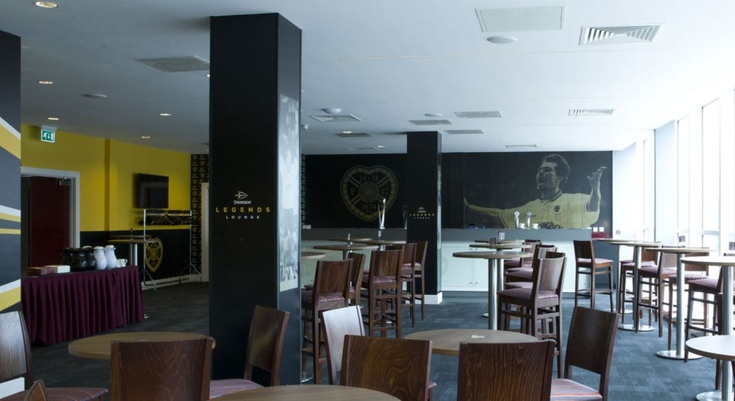
Things have recently changed at Tynecastle, with 5 new hospitality suites coming along with the new stand. Here’s some information on each of them to give you an idea:
- The Skyline Restaurant and Lounge – Open to the public on non-match days as well as a hospitality option, the Skyline Lounge is one special day out. It features a 3 course meal fine dining experience, complimentary drinks, and premium seating next to the directors box.
- The Big Matchday Experience – This is one of the best packages around, with a welcome drink followed by a three-course meal including wine. You’ll also get half-time refreshments, a post-match drink, entertainment, and a complimentary bar throughout the day.
- The Executive European Lounge – This is a more formal offering from Hearts, with views outside the ground overlooking Foundation Plaza. Gastro pub style food is cooked to order so you can keep your own schedule in a modern environment.
- The Heritage Lounge – Very much going down the ‘pub’ feel route, The Heritage Lounge pays homage to the club’s history in a relaxed more cozy atmosphere. Food and drink are available.
- The Strongbow Legends Lounge – This sponsored area celebrates club heroes, and is a bit like a private sports bar, so expect a fun atmosphere with plenty of excitement. There is food and drink available too.
Private Hire
With five main suites on offer and the ability to welcome anywhere from two to six hundred people, Tynecastle Stadium should be top of your list if you’re considering hosting an event in Edinburgh. Whether you’re putting on a conference, holding a seminar, having a private party or your looking for a unique wedding venue, the home of Hearts will almost certainly be able to look after you.
Stadium Tours & Museum
Why not take a perch on the manager’s seat in the dugout, giving yourself an idea of what it might be like to manage one of Scotland’s most famous clubs? Or how about having a look around the dressing room before taking a walk down the players’ tunnel to the side of the pitch? The tour of Tynecastle Stadium takes in all of the places you’d expect from a top-flight club, including the manager’s office and the director’s suite.
Tours take place sporadically, so you may want to check in with the club before just rocking up and demanding to see the manager’s office. If it’s a standard tour that you end up going on then that will set you back £12.72 if you’re an adult, £10.60 if you’re a concession or junior.
About Heart Of Midlothian
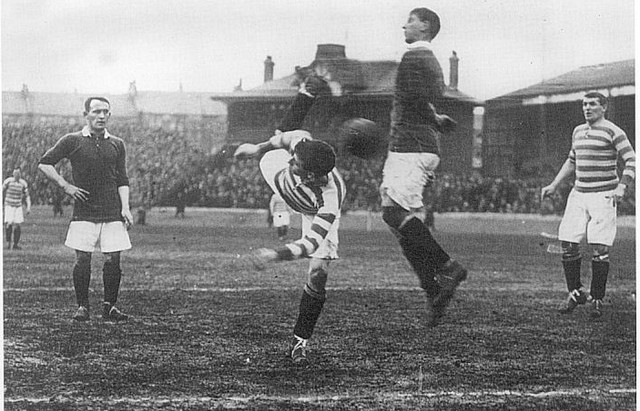
Heart of Midlothian Football Club is more commonly known as Hearts, but the club’s also been called The Jam Tarts and The Maroons over the years. Established in 1874, it is the oldest football club that plays its games in the capital of Scotland. The club was formed by a group of friends from, believe it or not, the Heart of Midlothian Quadrille Assembly Club, which was a dancing club in the city. Hearts have won the Scottish Football League top-flight on four separate occasions.
In the 1959-1960 season they not only won the league but also the Scottish League Cup. To date they are the only team apart from the Old Firm clubs of Celtic and Rangers to manage that league and cup double. They have won the Scottish Cup eight times, the Scottish League Cup four times and were the first non-Old Firm club to play in the UEFA Champions League when they qualified for Europe’s premier club competition in 2006. It wasn’t the first time Hearts had competed in Europe, however, as they had done so for the first time in 1958 as well as reaching the UEFA Cup quarter-final in 1989.
Tynecastle History
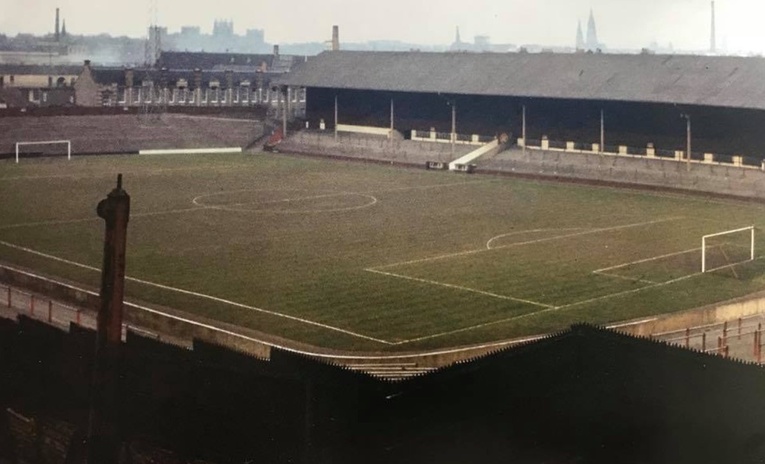
Tynecastle is the sixth largest football stadium in Scotland by capacity. That may not sound too impressive, but when you consider that three of the bigger stadiums are Celtic Park, Hampden Park and Ibrox, it’s certainly not a stat to be sniffed at. The club was able to build a new clubhouse at the ground in 1891 after winning the Scottish Cup, giving it the necessary funding for the building to be erected. It was in the early 1900’s that more significant changes took place, with a small stand and a pavilion being built in 1903 and an increase in the banks of the terracing taking place in 1906.
Tynecastle had the dubious honour of becoming Scotland’s first all-concrete stadium, something it achieved in 1954. Floodlights were installed in 1957 and then no major changes took place until the 1970’s when strict safety regulations were introduced. It wasn’t until the Taylor Report into the Hillsborough Disaster was released in 1990 that real sweeping changes were introduced at Tynecastle. That was when grounds throughout the UK were made all-seater locations. This happened to the home of Hearts in 1994 when the Western and Northern parts of the stadium were demolished and rebuilt in their entirety.
Future Developments
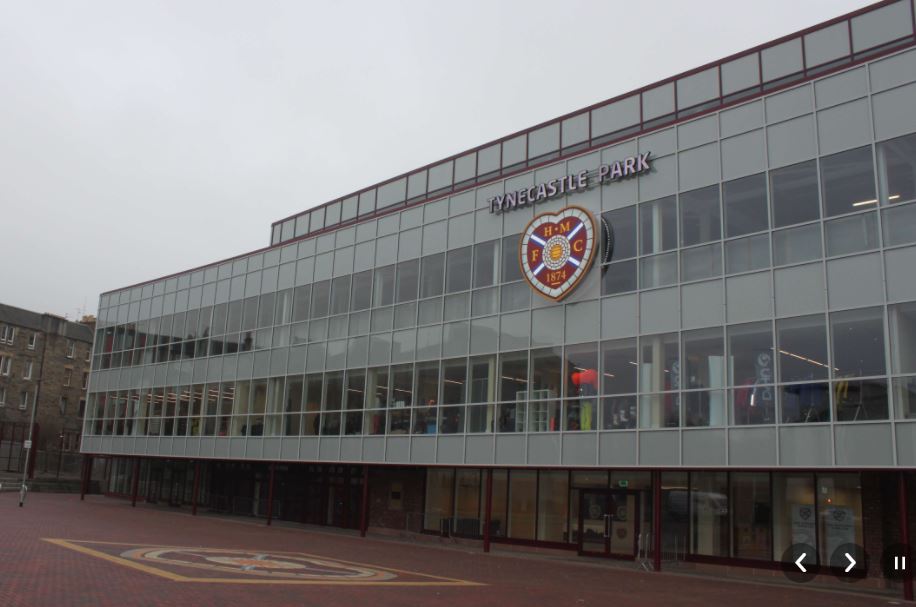
Hearts have attempted to sell Tynecastle on numerous occasions, hoping to move to different grounds, but to no avail. The club is unlikely to move in the foreseeable future, instead opting to develop the ground further. This has already begun with the development of The Main Stand, turning it into a 7000 seat stand in order to bring the overall capacity of the ground to over 20,000. The new Main Stand opened at the end of 2017, and was further adapted in 2022 to add a hotel as well as updating the facilities within.
